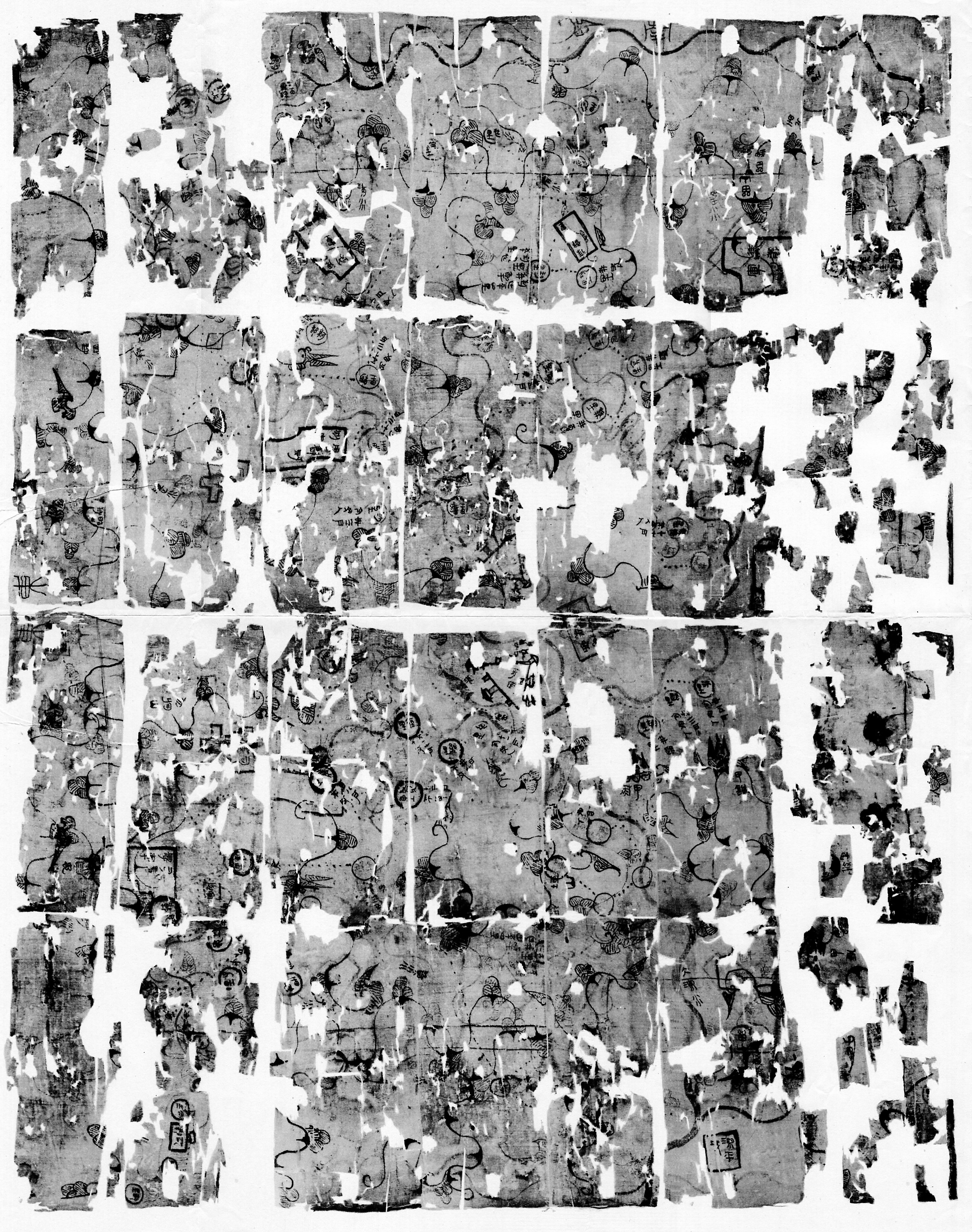Nanyue
 | p = Nányuè
| w = Nan2-yüeh4
| l =
| mi =
| gr = Nanyueh
| j = Naam4 Jyut6
| y = Nàahm Yuht
| poj = Lâm-oa̍t
| tl = Lâm-ua̍t
| oc-bs = *nˤ[ə]m [ɢ]ʷat
| showflag = pj
| qn = Nam Việt
| chuhan = 南越
| zha = Namz Yied
| ci =
| bpmf = ㄋㄢˊ ㄩㄝˋ
| tp = Nányuè
}}
| p = Nányuè
| w = Nan2-yüeh4
| l =
| mi =
| gr = Nanyueh
| j = Naam4 Jyut6
| y = Nàahm Yuht
| poj = Lâm-oa̍t
| tl = Lâm-ua̍t
| oc-bs = *nˤ[ə]m [ɢ]ʷat
| showflag = pj
| qn = Nam Việt
| chuhan = 南越
| zha = Namz Yied
| ci =
| bpmf = ㄋㄢˊ ㄩㄝˋ
| tp = Nányuè
}}Nanyue ( or 南粵|p=Nányuè|cy=|j=Naam4 Jyut6|l=Southern Yue}}, , ), was an ancient kingdom founded in 204 BC by the Chinese general Zhao Tuo, whose family (known in Vietnamese as the Triệu dynasty) continued to rule until 111 BC. Nanyue's geographical expanse covered the modern Chinese subdivisions of Guangdong, Guangxi, Hainan, Hong Kong, Macau, southern Fujian and central to northern Vietnam. Zhao Tuo, then Commander of Nanhai Commandery of the Qin dynasty, established Nanyue in 204 BC after the collapse of the Qin dynasty. At first, it consisted of the commanderies of Nanhai, Guilin, and Xiang.
Nanyue and its rulers had an adversarial relationship with the Han dynasty, which referred to Nanyue as a vassal state while in practice it was autonomous. Nanyue rulers sometimes paid symbolic obeisance to the Han dynasty but referred to themselves as emperor. In 113 BC, fourth-generation leader Zhao Xing sought to have Nanyue formally included as part of the Han Empire. His prime minister Lü Jia objected vehemently and subsequently killed Zhao Xing, installing his elder brother Zhao Jiande on the throne and forcing a confrontation with the Han dynasty. The next year, Emperor Wu of Han sent 100,000 troops to war against Nanyue. By the year's end, the army had destroyed Nanyue and established Han rule. The dynastic state lasted 93 years and had five generations of monarchs.
The existence of Nanyue allowed the Lingnan region to avoid the chaos and hardship surrounding the collapse of the Qin dynasty experienced by the northern, predominantly Han Chinese regions. The kingdom was founded by leaders originally from the Central Plain of China and were all of Han Chinese in origin. They were responsible for bringing Chinese-style bureaucracy and handicraft techniques to inhabitants of southern regions, as well as knowledge of the Chinese language and writing system. Nanyue rulers promoted a policy of "Harmonizing and Gathering the Hundred Yue tribes" (), and encouraged ethnic Han to immigrate from the Yellow River region to the south. Nanyue rulers were then not against the assimilation of Yue and Han cultures.
In Vietnam, the rulers of Nanyue are referred to as the Triệu dynasty. The name "Vietnam" (''Việt Nam'') is derived and reversed from ''Nam Việt'', the Vietnamese pronunciation of Nanyue. In traditional Vietnamese historiography, important works such as the ''Đại Việt sử ký'' considered Nanyue to be a legitimate state of Vietnam and the official starting point of their history. However, starting in the 18th century, the view that Nanyue was not a legitimate Vietnamese state and Zhao Tuo was a foreign invader started gaining traction. After World War II, this became the mainstream view among Vietnamese historians in North Vietnam and after Vietnam was reunified, it became the official state orthodoxy promoted by the ruling Vietnamese Communist Party. Nanyue was removed from the national history while Zhao Tuo was established as a foreign invader. Provided by Wikipedia
Showing 1 - 20 results of 25 for search 'Yue, Nan', query time: 0.05s
Refine Results
-
1
STUDY ON THE FORMATION MECHANISM OF BONDING LAYER AROUND PILE BODY IN SOFT CLAY by Jiang Yue-Nan, Chen Song
Published 2019-10-01Get full text
Article -
2
-
3
-
4
The independent factors associated with oxygen therapy in COVID-19 patients under 65 years old. by Yue-Nan Ni, Ting Wang, Bin-Miao Liang, Zong-An Liang
Published 2021-01-01Get full text
Article -
5
-
6
-
7
-
8
-
9
-
10
-
11
Genome sequencing analysis and drug resistance of the foodborne strain SCY of Bacillus cereus by QIN Xixi, LI Wen, ZHANG Wen, YUE Nan, MA Hongmei, ZENG Jin, MA Chenjie
Published 2023-08-01Get full text
Article -
12
-
13
-
14
-
15
The value of conventional ultrasound combined with superb microvascular imaging and color Doppler flow imaging in the diagnosis of thyroid malignant nodules: a systematic review an... by Li Jiang, Li Jiang, Dian Zhang, Yue-Nan Chen, Xue-Juan Yu, Mei-Fang Pan, Lian Lian, Lian Lian
Published 2023-06-01Get full text
Article -
16
-
17
Genome-Wide Profiling of Diadegma semiclausum Ichnovirus Integration in Parasitized Plutella xylostella Hemocytes Identifies Host Integration Motifs and Insertion Sites by Ze-hua Wang, Ze-hua Wang, Yue-nan Zhou, Yue-nan Zhou, Jing Yang, Jing Yang, Xi-qian Ye, Xi-qian Ye, Min Shi, Min Shi, Jian-hua Huang, Jian-hua Huang, Jian-hua Huang, Xue-xin Chen, Xue-xin Chen, Xue-xin Chen, Xue-xin Chen
Published 2021-01-01Get full text
Article -
18
Dynamic light caused less photosynthetic suppression, rather than more, under nitrogen deficit conditions than under sufficient nitrogen supply conditions in soybean by Yu-Ting Li, Ying Li, Yue-Nan Li, Ying Liang, Qiang Sun, Geng Li, Peng Liu, Zi-Shan Zhang, Hui-Yuan Gao
Published 2020-07-01Get full text
Article -
19
-
20
Preoperative albumin-to-globulin ratio and prognostic nutritional index predict the prognosis of colorectal cancer: a retrospective study by JunHu Li, Na Zhu, Cheng Wang, LiuPing You, WenLong Guo, ZhiHan Yuan, Shuai Qi, HanZheng Zhao, JiaYong Yu, YueNan Huang
Published 2023-10-01Get full text
Article